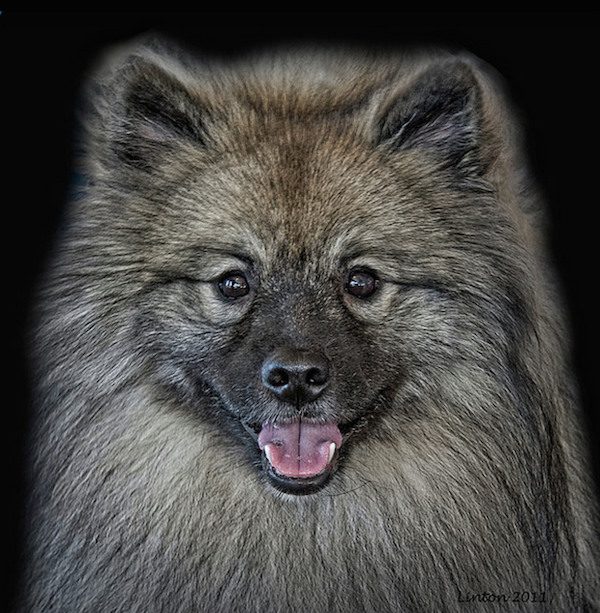
They were known as ” “Wolfspitzen” in Germany, and in France, they went by “Chiens Loup.” In Italy, the dog was known as the “Lupini,” and in Holland, the plural form of the breed breed is “Keeshonden” (correctly pronounced “kayz-hawnd-en”).
One of the things that makes the Keeshond so lovely is its “stand off coat,” a double-coat with agouti coloration. The Agouti gene, actually a protein, has a major effect on the amount of melanin injected into the growing hair and causes a banding effect on the hair; it controls the distribution of black pigment which can be uniformly distributed, or distributed to “points” of the body. In the Keeshond, each hair of the outer coat is partially black, and depending upon the length and depth of each hair, a Keeshond can be lighter or darker (either is correct).
As an aside, there are tests that can help breeders/owners determine the agouti alleles present in their dogs which can help determine possible coat color outcomes from specific matings; the University of California at Davis offers such a test that you can find here.
Keeshond by Larry Linton
http://pixels.com/
